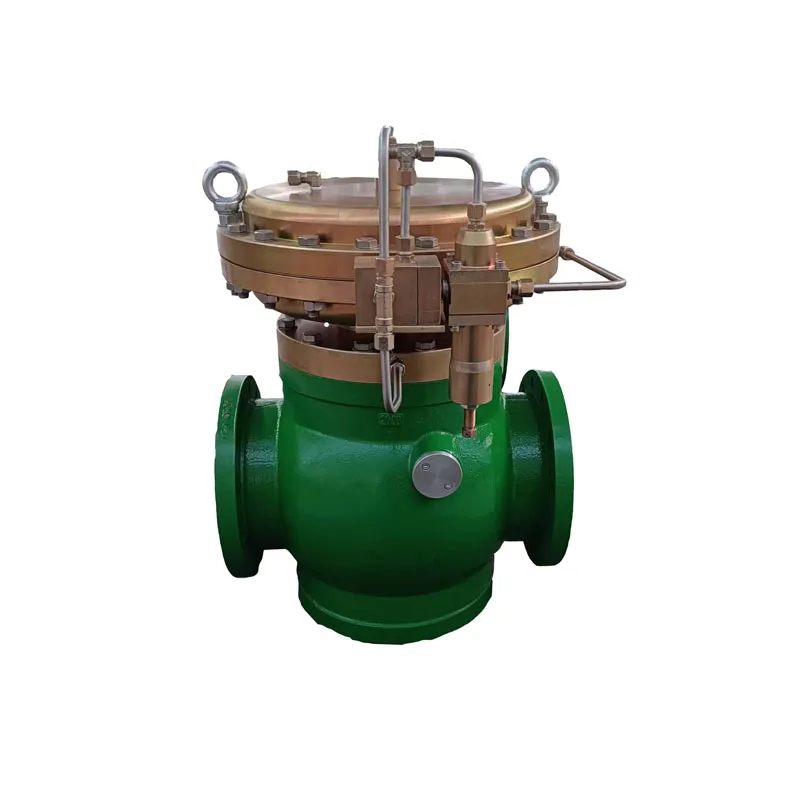
Dec . 04, 2024 16:41
Back to list
pneumatic valve
Understanding Pneumatic Valves Key Components and Applications
Pneumatic valves play a crucial role in the world of automation and control systems. These devices are designed to manage the flow of compressed air or gas in various industrial applications, ranging from simple actuation to complex robotic systems. In this article, we'll explore the essential functions of pneumatic valves, their types, advantages, and common applications.
What is a Pneumatic Valve?
A pneumatic valve is a mechanical device that regulates the flow and pressure of air or gas within a pneumatic system. Typically operated by an actuator, these valves can be controlled manually, electrically, or pneumatically. The key function of a pneumatic valve is to direct the air in a desired pathway, enabling the operation of various components like cylinders and motors. They are indispensable in any system that utilizes compressed air as a medium for power transmission.
Types of Pneumatic Valves
Pneumatic valves come in various types, each serving unique functions according to their design and application. Some common types include
1. Directional Control Valves These valves control the direction of airflow within the system, allowing operators to select various output paths. They are typically used in cylinders to direct movement. Common configurations include 2/2, 3/2, 4/2, and 5/2 valves.
2. Flow Control Valves Flow control valves regulate the speed of an actuator by controlling the rate of airflow. They help ensure that motors and cylinders operate at the desired speed.
3. Pressure Relief Valves These valves protect the system from excessive pressure buildup by allowing air to escape when the pressure exceeds a predefined level. This feature is crucial for maximizing safety and protecting equipment.
4. Shut-off Valves These valves are used to either fully open or close the flow of air in a system. They can be manually operated or controlled through automated systems.
5. Check Valves A check valve allows air to flow in one direction only, preventing backflow. This is essential in maintaining system pressure and ensuring that air flows through the correct path.
Advantages of Pneumatic Valves
pneumatic valve

Pneumatic valves offer several advantages over other types of valves used in different systems
1. Speed Pneumatic systems, including valves, operate quickly compared to hydraulic systems. This rapid response time is beneficial in applications requiring immediate action or adjustment.
3. Cost-Effectiveness Pneumatic components are generally less expensive to manufacture and install, making pneumatic valves a cost-effective option for many industries.
4. High Reliability Pneumatic systems tend to be robust and reliable, with fewer parts that can wear out compared to electrical systems.
5. Clean Operation As pneumatic valves work with compressed air, they do not involve oils or other fluids, making them suitable for applications in industries where cleanliness is critical, like food processing or pharmaceuticals.
Common Applications
Pneumatic valves are widely used across various industries due to their versatility and efficiency. Some common applications include
- Manufacturing In assembly lines and manufacturing processes, pneumatic valves control the operation of pneumatic cylinders and tools. - Automotive Used in systems for painting, fastening, and material handling. - Robotics Pneumatic valves are essential in robotic arms and grippers, allowing precise movements and operations. - Packaging They are utilized in packaging machinery to control product flow and sealing processes.
Conclusion
Pneumatic valves significantly contribute to the efficiency and effectiveness of pneumatic systems, playing vital roles in automation and control within various industries. Understanding their types, advantages, and applications can help in selecting the appropriate valve for a particular system, ultimately improving performance and reliability. As industries continue to advance and seek more effective solutions, pneumatic valves will remain integral components in the operation of complex systems.
Next:
Latest news
-
Safety Valve Spring-Loaded Design Overpressure ProtectionNewsJul.25,2025
-
Precision Voltage Regulator AC5 Accuracy Grade PerformanceNewsJul.25,2025
-
Natural Gas Pressure Regulating Skid Industrial Pipeline ApplicationsNewsJul.25,2025
-
Natural Gas Filter Stainless Steel Mesh Element DesignNewsJul.25,2025
-
Gas Pressure Regulator Valve Direct-Acting Spring-Loaded DesignNewsJul.25,2025
-
Decompression Equipment Multi-Stage Heat Exchange System DesignNewsJul.25,2025

